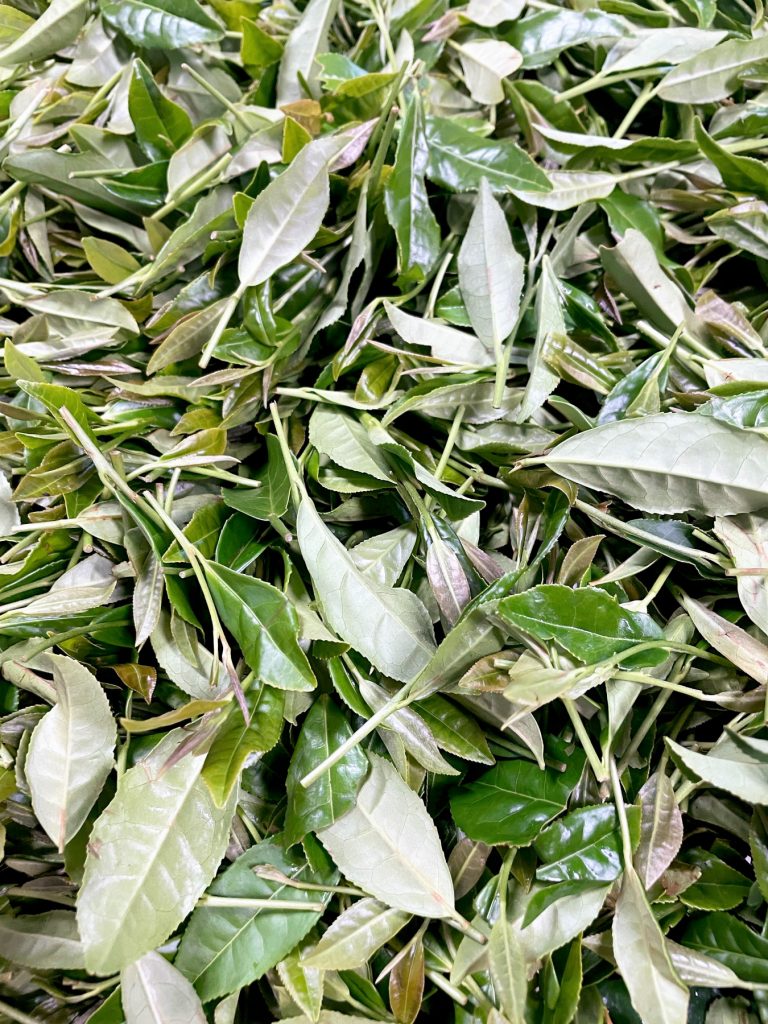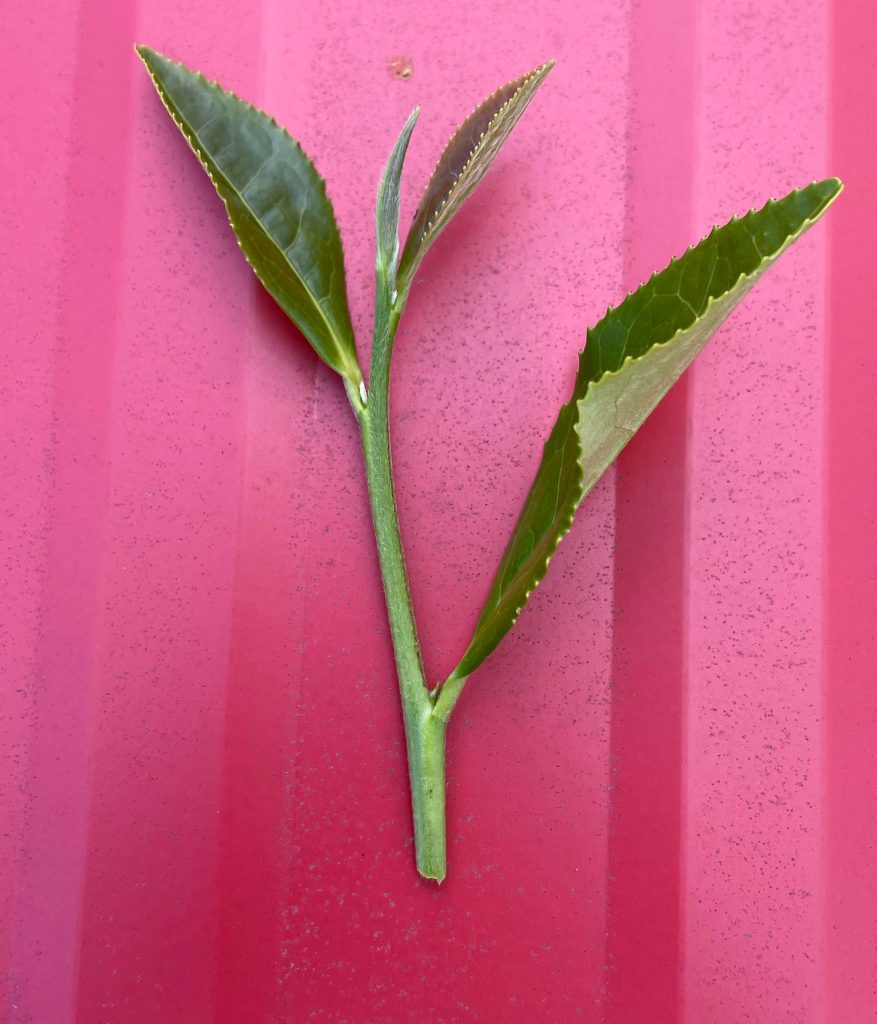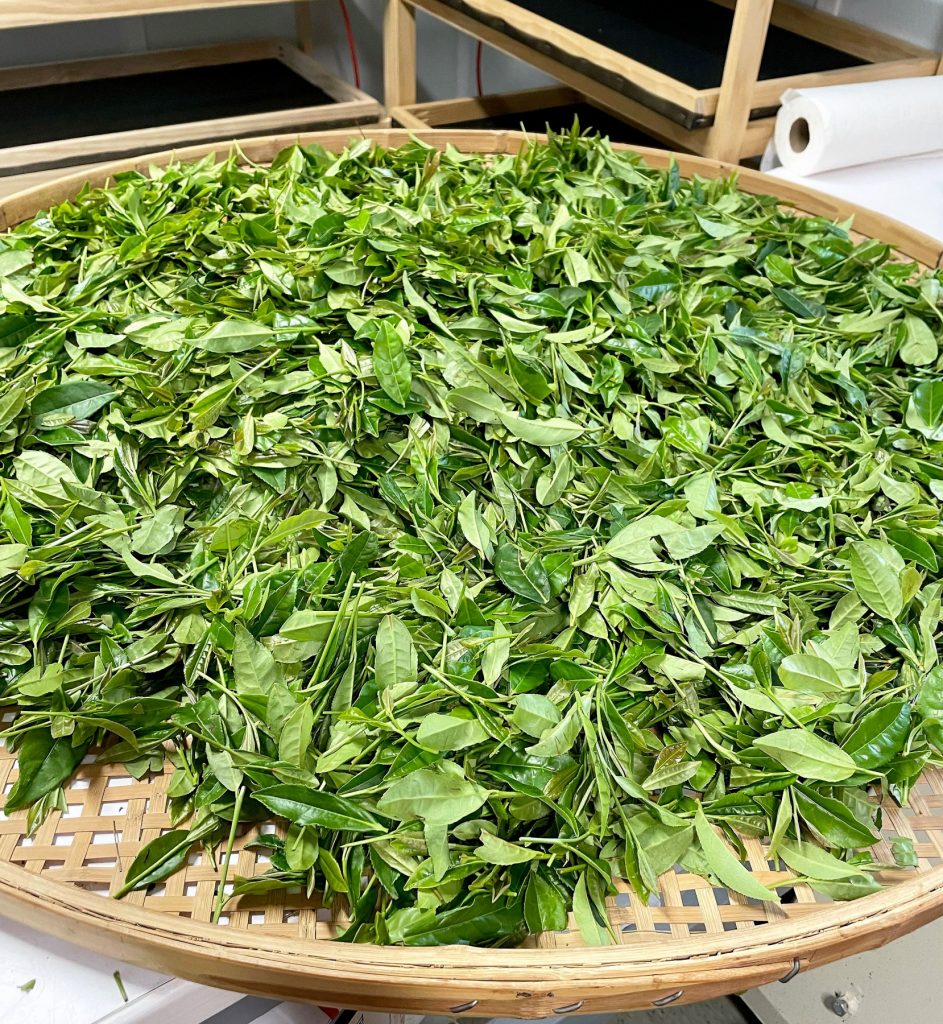
It’s a time-honored tradition to sit down and enjoy a cup of tea among your plants in the greenhouse. But what about growing tea there? Tea (Camellia sinensis) has been cultivated around the world for thousands of years, but in the United States it is a relatively new crop. With the resurgence of interest in home-grown foods, I’m talking with Angela McDonald, owner of Oregon Tea Traders and President of the U.S. League of Tea Growers.

Can folks at home grow and harvest their own tea, whether green, white, black, or oolong? “Yes,” Angela says. “All those teas come from the same plant. It’s how you handle it after harvest that determines what kind of tea you’ll have.”
Do you need a greenhouse to grow it? Not always, Angela tells me. It grows outdoors in Zones 7-9, and even colder if in a protected place. And note that teas like those from the Darjeeling region can grow in quite chilly climates. “Sometimes very high-quality tea comes from mountainous regions,” she says. Or, in colder parts of the country, you can grow plants in large (minimum two-foot diameter) containers, moving them inside your greenhouse for winter.
Indoors or out, you keep your plants much shorter than they would grow naturally because the secret to tea harvesting—shearing. “You prune aggressively,” Angela says. “Tea comes from unopened buds plus one to four leaves down the stem—no flowering should occur. You harvest several times a year.”
On farms, the plants respond well to being sheared with a flat squared-off top (like a waist-high boxwood). This shape is called a plucking table, Angela explains. The tender new growth above that height is harvested. Imagine, you could plant a neat hedge between you and your neighbors that actually gives you a cuppa when you cut it.

Angela says ten or twenty plants would yield a nice stash of tea leaves. Camellias prefer acid soil—“Grow them like you would blueberries,” she says. And they are an understory plant, so lightly dappled shade or morning sun is preferred.
And what kind of tea will you get? “It depends on how much oxidation happens,” Angela notes. For green tea, no oxidation. The leaves are allowed to wither a bit, then heated briefly—blanching, steaming, or just heating in a pan. She says you’ll know they’re done when “they turn a brighter color and become more pliable.”
With white tea, a small amount of oxidation happens when the leaves are dried in the sun to release the moisture. The more complex processes for fermented teas are easy to learn. Get started by checking out the Let’s Grow Tea Facebook page. You can also join the U.S. League of Tea Growers for a modest yearly fee and get more information, webinars, and meet other tea enthusiasts. Angela says, “Tea people are really fun!”


